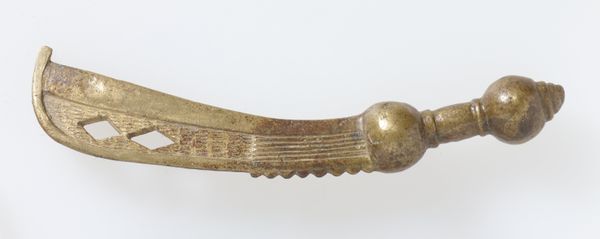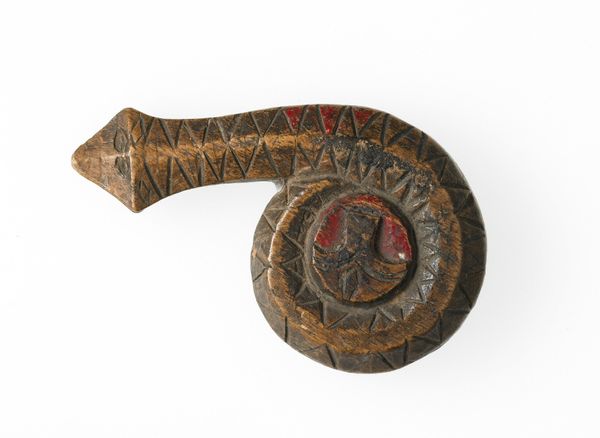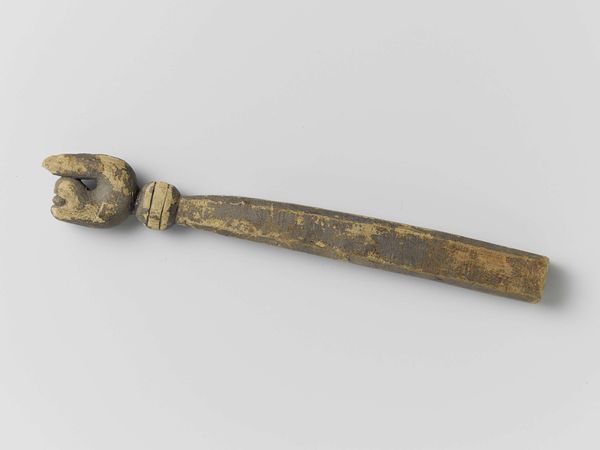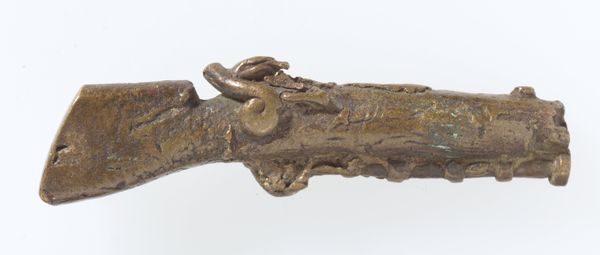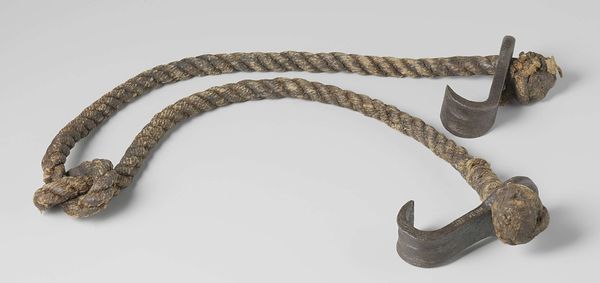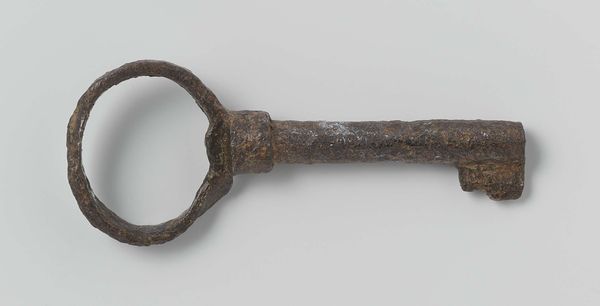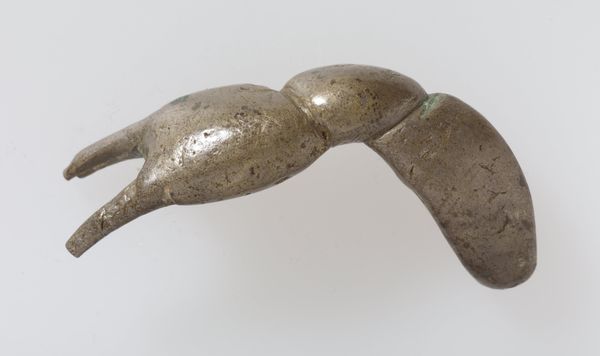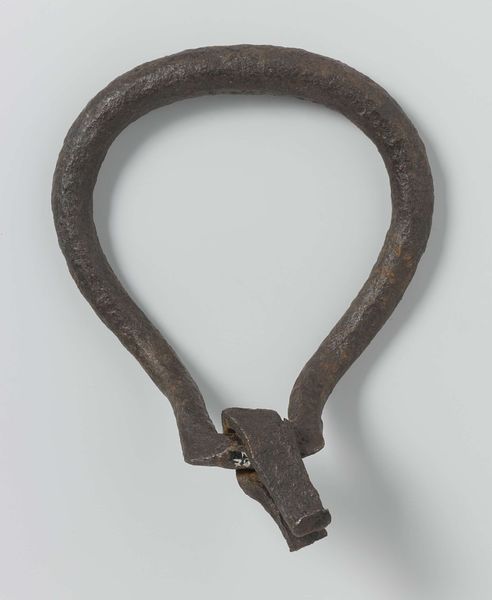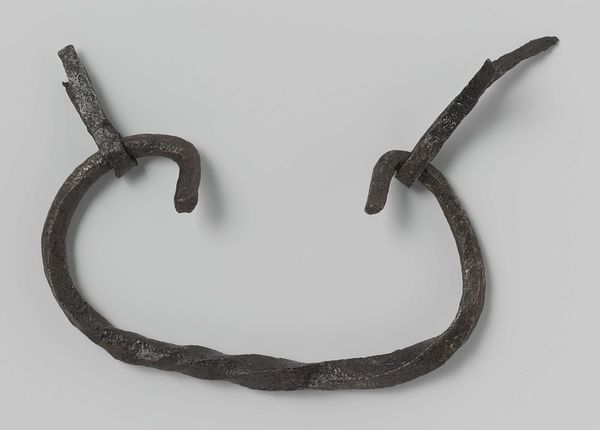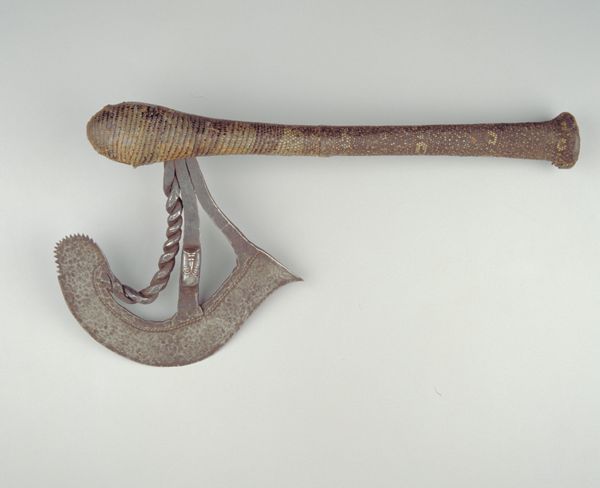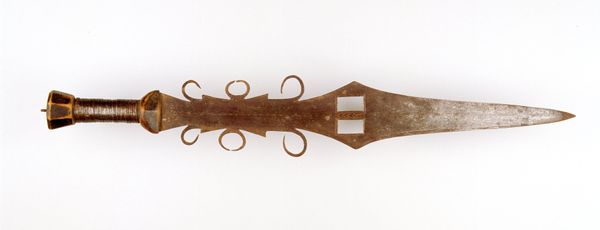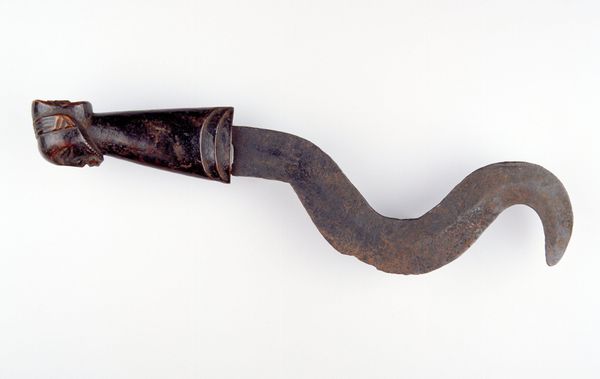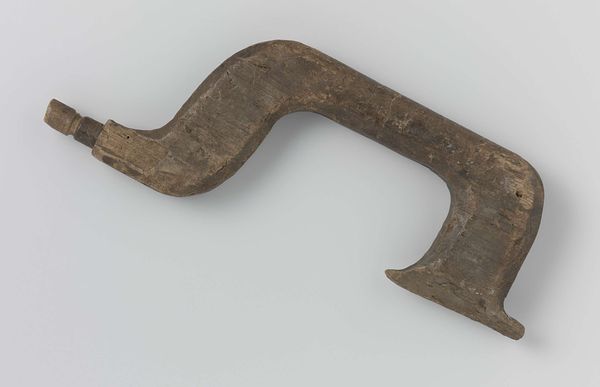
carving, sculpture, wood
#
carving
#
sculpture
#
form
#
sculpture
#
wood
Dimensions: 4 15/16 x 2 5/16 x 1/2 in. (12.54 x 5.87 x 1.27 cm)
Copyright: Public Domain
Curator: Looking at this fascinating object, we see what's identified as a thread waxing tool, dating from the 19th to early 20th century. It resides here at the Minneapolis Institute of Art and is of an unknown origin. It seems to be carved from wood. Editor: It strikes me as oddly compelling. There's something almost talismanic about its shape, like a stylized serpent coiled and ready. The dark wood also adds a sense of age and mystery. Curator: The serpent imagery is a powerful read, considering such objects historically existed within distinct social contexts, primarily within female craft and labor spheres. The very act of waxing thread before use in sewing would have been a common practice. Editor: Precisely! And that repetition, that mundane act transformed through symbolism. Notice the incised triangles marching along its length and encircling the face at the center of the coil. It suggests protection, guidance. Perhaps to ward off misfortune in domestic pursuits? Curator: I would consider how tools and materials carry social status in many Indigenous American communities. Perhaps the material itself— the type of wood—spoke to something significant or its connection to ancestral lands. The simple geometric shapes certainly echo designs found across diverse cultures and craft traditions, serving as a functional object while communicating encoded cultural values. Editor: And that small, almost childlike face at the center... it reminds me of the human desire to imbue objects with personality. It speaks of continuity and heritage being physically manifested through art. Does the museum have information about its use in any specific cultural community? Curator: Not definitively, unfortunately. However, placing it within a broader understanding of tools as status objects can shed light. It acknowledges craft and creation, as something tied inextricably to identity and daily labor. We must consider whose hands shaped the object, as well as the context in which they produced this art. Editor: Its lack of explicit attribution speaks to the power of communal artistry, too. The piece communicates meaning regardless of any individual artistic intent. A truly lovely artifact that embodies history in ways that still speak today. Curator: Absolutely, a compelling and understated visual representation about material cultures shaping identities within a much broader human story.
Comments
No comments
Be the first to comment and join the conversation on the ultimate creative platform.
